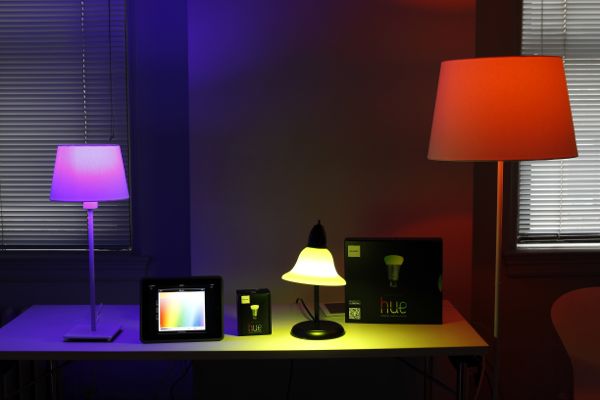Phillips Hue wireless lightbulbs exclusive to Apple Store, work with Android

Phillips Electronics on Monday announced a new home automation accessory called Hue, which lets its users control home light fixtures wirelessly from a smartphone application.
Hue pairs a ZigBee LightLink local communications network with your home Wi-Fi network and mobile app. The LED bulbs communicate with the "bridge" device via ZigBee LightLink, and the bridge communicates with your router, which in turn communicates with your Wi-Fi enabled smart devices. From the application, users can control the color of their Hue lights in any of 16 million shades, program timers, and schedule settings for optimal light and energy management. A single bridge can control up to 50 individual lightbulbs.
The starter kit, which includes three standard LED bulbs and the ZigBee LightLink wireless bridge, will be available exclusively through Apple stores beginning October 30 and will cost $199. Additional bulbs will cost $59 each, but since these are LED replacement bulbs, they promise as much as 15,000 hours of usage at just one fifth the energy footprint of regular lightbulbs.
We actually first started hearing about these lightbulbs two years ago when Phillips called us out of the blue to talk about what they'd developed.
When they debuted this generation of LED bulbs, they said they'd have a lifetime of 25,000 hours at just 12 Watts of power. Of course, that was long before commercial availability, so the real-world performance has been whittled down quite a bit, and instead of 12 watts, these are 8.5W.
Perhaps the best part of this announcement is the fact that these starter kits will be available exclusively through the Apple Store, but Phillips says Hue will work with Android smartphones, too, so it's really only retail exclusivity.
Hue is unique in the home automation space because Phillips is letting users control the insides of the bulbs, so to speak. Other lighting automation systems like the ones we saw from Monster early in 2012 simply control electricity and not the actual LEDs within the lights.
